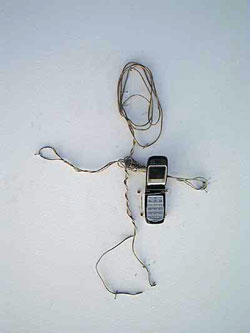Werner Herzog, Herzog on Herzog (New York: Faber and Faber, 2003), 164.
Dominic Fox, Cold World: The Aesthetics of Dejection and the Politics of Militant Dysphoria (London: Zero Books, 2009), 1.
Nick Srnieck and Alex Williams, “#ACCELERATE MANIFESTO for an Accelerationist Politics,” May 14, 2013, par. 23 →.
Stan Brakhage, “From ‘Metaphors on Vision,’” The Avant-Garde Film: A Reader of Theory and Criticism, ed. P. Adams Sitney(New York: Anthology Film Archives, 1978), 120.
Georges Didi-Huberman, “Picture = Rupture: Visual Experience, Form and Symptom According to Carl Einstein,” Papers of Surrealism 7 (2007): 5.
Ibid., 6.
Anthology Film Archives is a theater in New York where in the late sixties and early seventies filmmakers and artists (Snow amongst them) would gather to watch films. At the time, the theater had wing-like chairs that isolated the viewer sensorially in order to “equate” her field of vision to the screen, thereby delivering a solipsistic experience.
Michael Snow, The Michael Snow Project: The Collected Writings of Michael Snow (Waterloo: Wilfrid Laurier University Press, 1994), 56.
Krauss, 50.
Gilles Deleuze, Cinema I: The Movement-Image (Minneapolis: University of Minnesota Press, 1986), 84.
Snow, The Michael Snow Project, 44.
Deleuze, Cinema I, 85.
Donna Haraway, “Situated Knowledges: The Science Question in Feminism and the Privilege of Partial Perspective” Feminist Studies, vol. 14, no. 3 (Autumn 1988): 575–99, 582.
Didi-Huberman, “Picture = Rupture,” 9.
Melissa McMahon, “Beauty: Machinic Repetition in the Age of Art,” in A Shock to Thought: Expression After Deleuze and Guattari, ed. Brian Massumi (London: Routledge, 2002), 4.
Ibid., 8.
Rob Nixon, Slow Violence and the Environmentalism of the Poor (Cambridge, MA: Harvard University Press, 2011), 12.
Susan Sontag, On Photography (New York: Farrar, Straus and Giroux, 1977), 80.
Ibid., 177
Stephen Shaviro, “Post-Cinematic Affect: On Grace Jones, Boarding Gate and Southland Tales,” Film Philosophy 14.1 (2010): 12.
Franco “Bifo” Berardi, “The Neuroplastic Dilemma: Consciousness and Evolution,” e-flux journal 60 (Dec. 2014): pars. 21–23 →.
Ibid., par. 3.
Franco “Bifo” Berardi, The Uprising: On Poetry and Finance (New York: Semiotexte, 2012), 15.
Don Delillo, White Noise (New York: Picador, 2002), 20.
Jean Baudrillard,“Toward a Critique of the Political Economy of the Sign,” trans. Carl R. Lovitt and Denise Klopsch, SubStance, vol. 5, no. 15 (1976): 111–116.
Franco “Bifo” Berardi, “Accelerationism Questioned from the Point of View of the Body” e-flux journal 46 (June 2013): par. 11 →.
Benjamin Bratton,“Some Trace Effects of the Post-Anthropocene: On Accelerationist Geopolitical Aesthetics,” e-flux journal 46 (June 2013): par. 16 →.
Berardi, The Uprising, 41.
Shaviro, “Post-Cinematic Affect,” par. 14.
Hito Steyerl, “In Free Fall: A Thought Experiment on Vertical Perspective,” e-flux journal 24 (April 2011): par. 6 →.
Claire Colebrook and Cary Wolfe, “Dialogue on the Anthropocene,” Haus der Kulturen der Welt, Berlin, Jan. 23, 2013 →.
Serge Daney, “Before and After the Image,” Revue des Études Palestiniennes 40 (Summer 1991): par. 2 →.
Didi-Huberman, “Picture = Rupture,” 17.
Georges Didi-Huberman, “The Supposition of the Aura: The Now, the Then, and Modernity,” Walter Benjamin and History, ed. Andrew Benjamin (New York: Continuum, 2006), 8.
Daney, “Before and After the Image,” par. 2.
Fox, Cold World, 7.
Ibid., 70.
I have been unable to locate the author, title, date and location of this evocative mechanical sculpture.
Jorge Luis Borges, The Book of Imaginary Beings, trans. Andrew Hurley (New York: Viking, 1967), 2.
I would like to thank π who knows why and Romi Mikulinski for her feedback and comments on an earlier version of this essay, which is a chapter from Art in the Anthropocene: Encounters Among Aesthetics, Politics, Environments and Epistemologies, eds. Heather Davis and Etienne Turpin (Ann Arbor: Open Humanities Press, forthcoming 2015).
